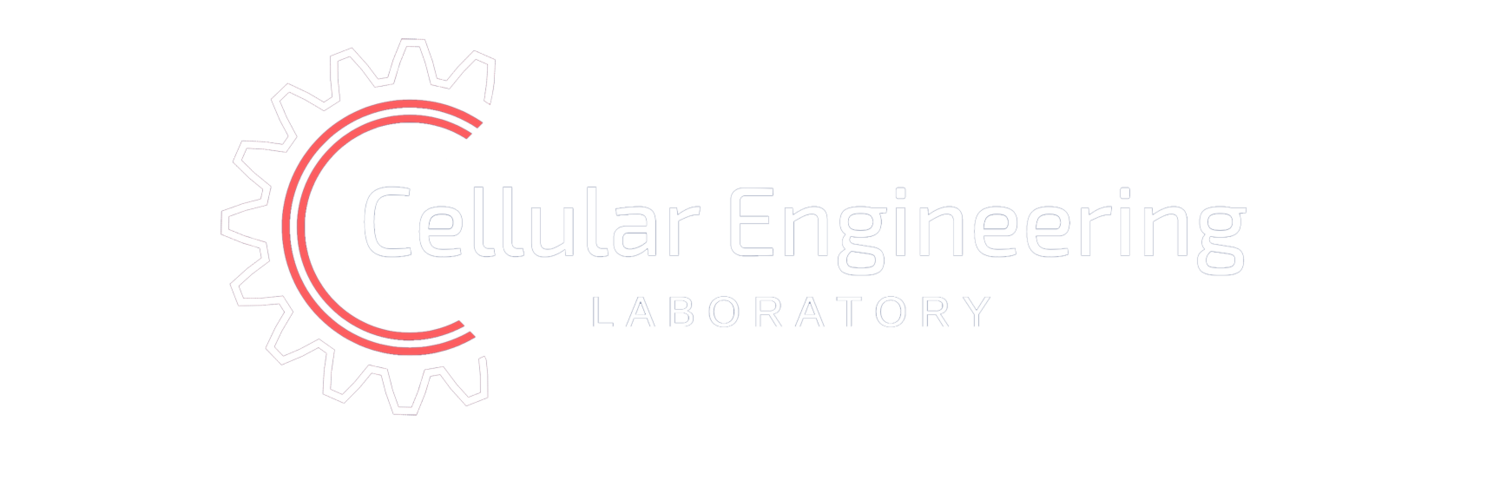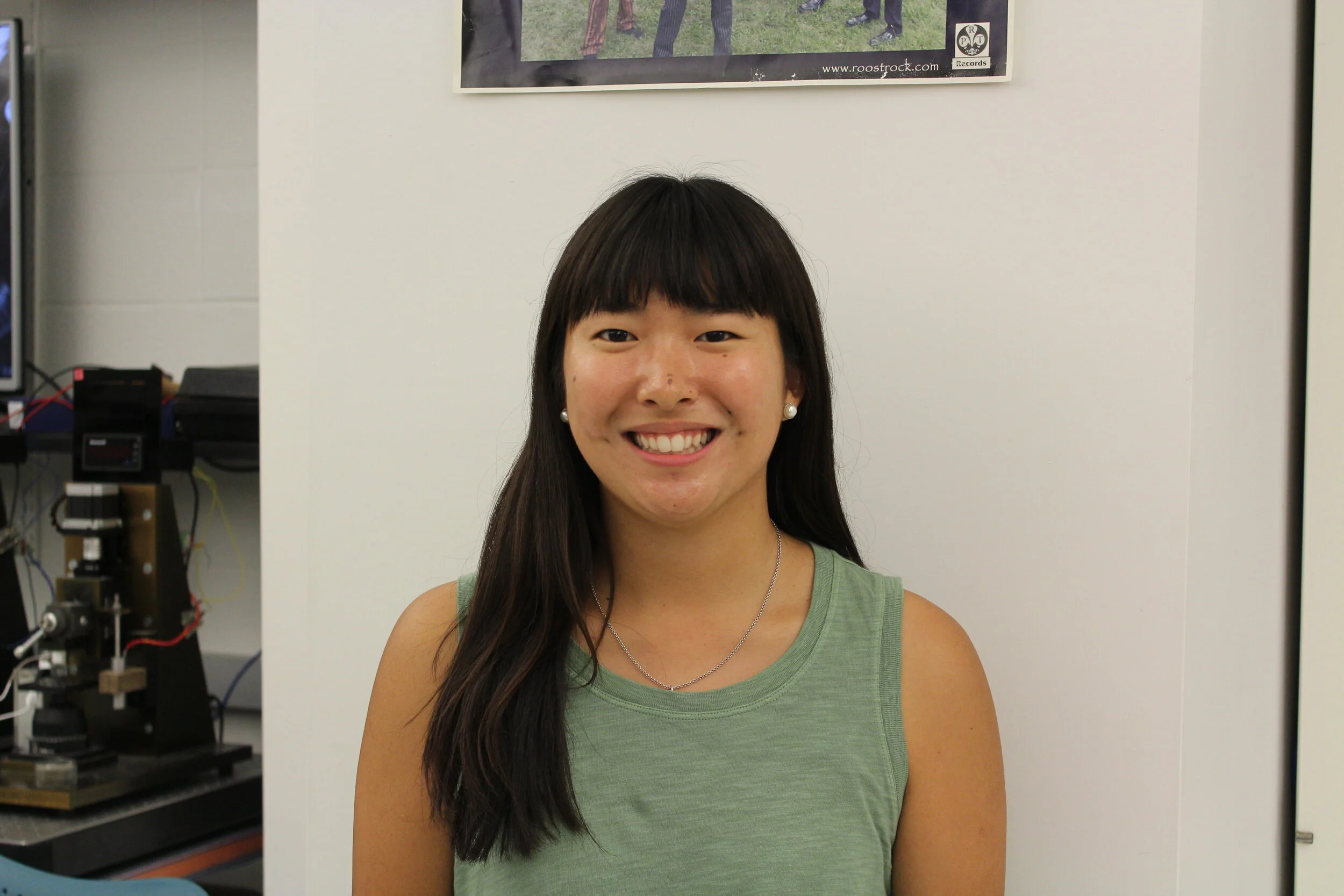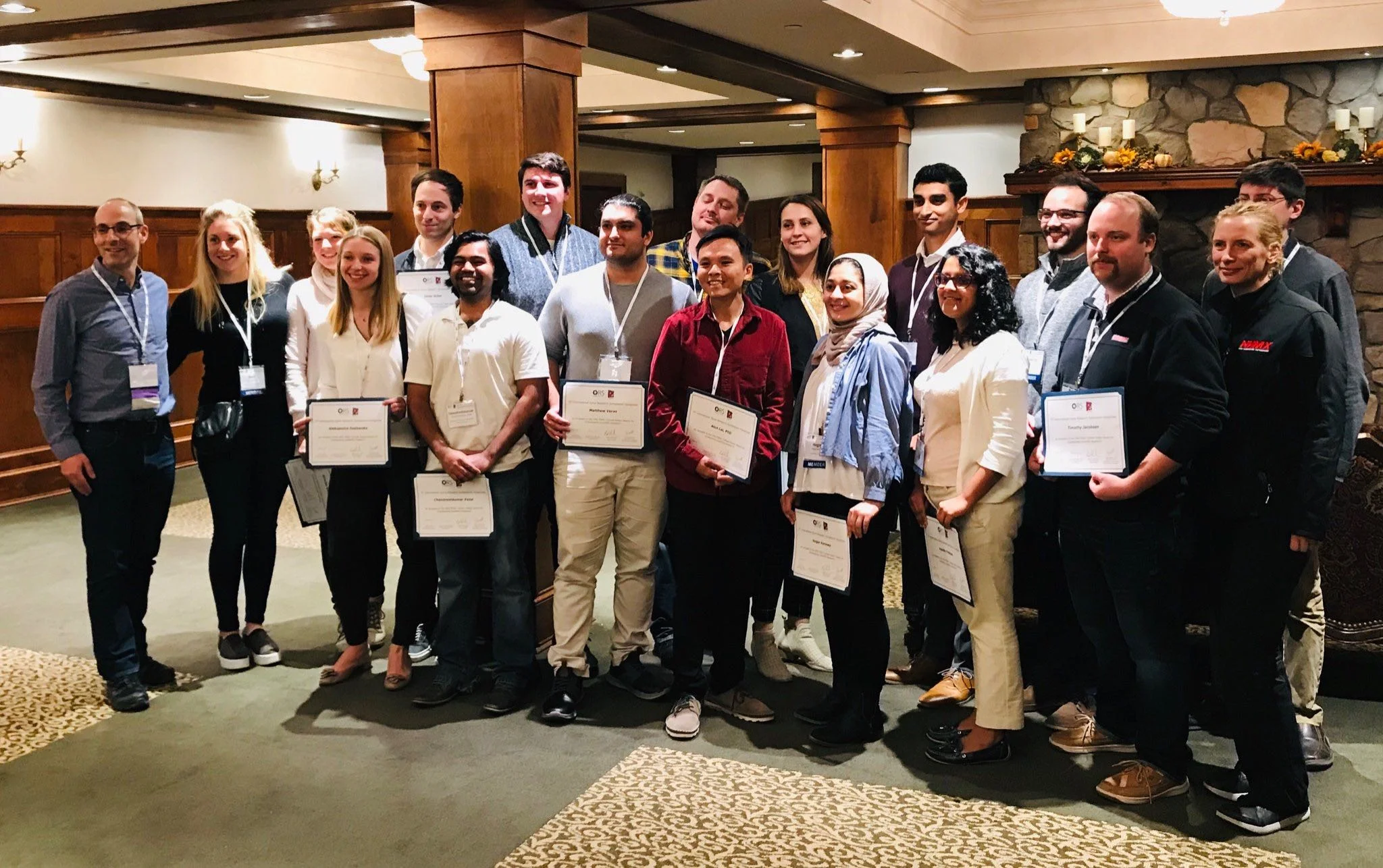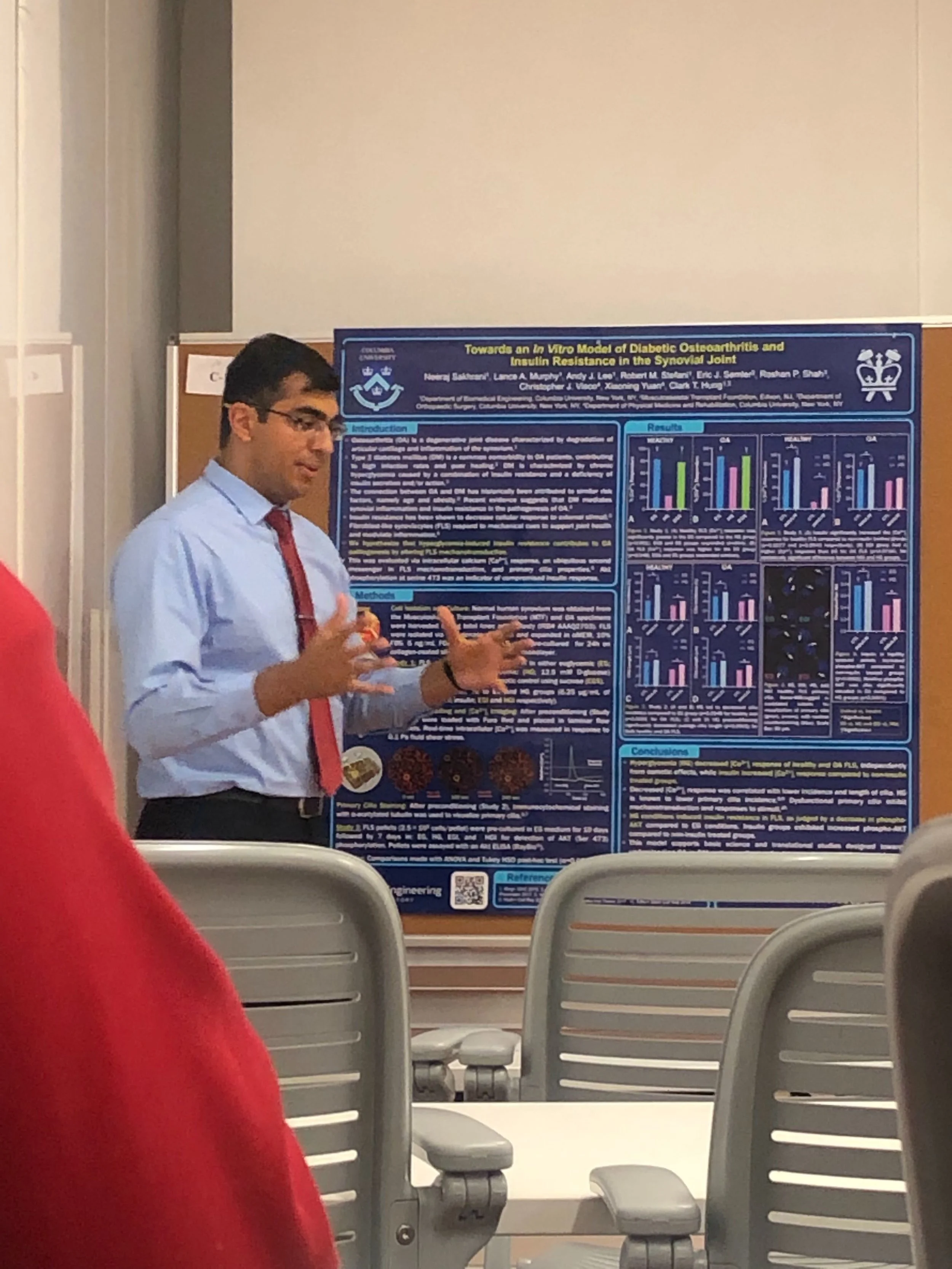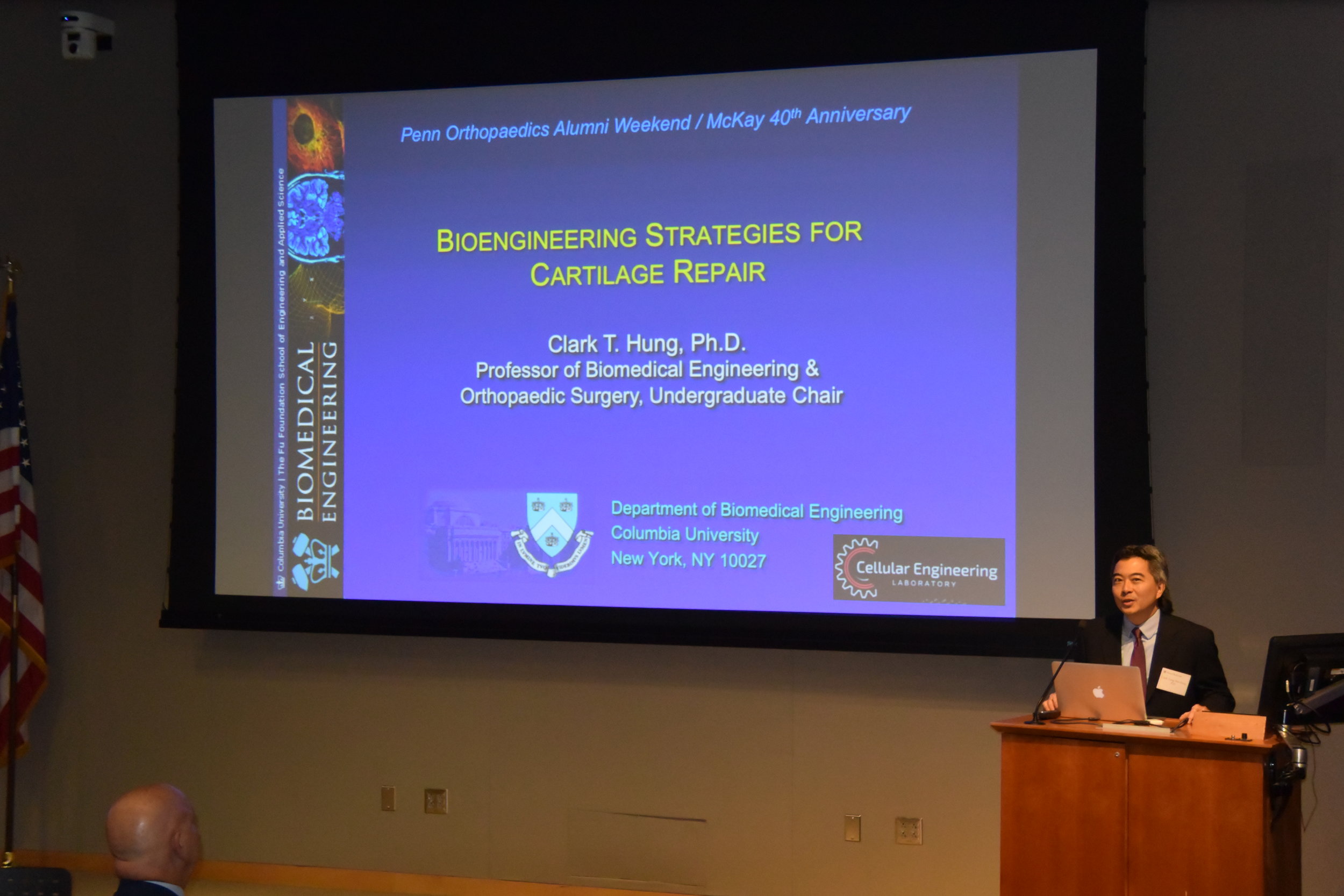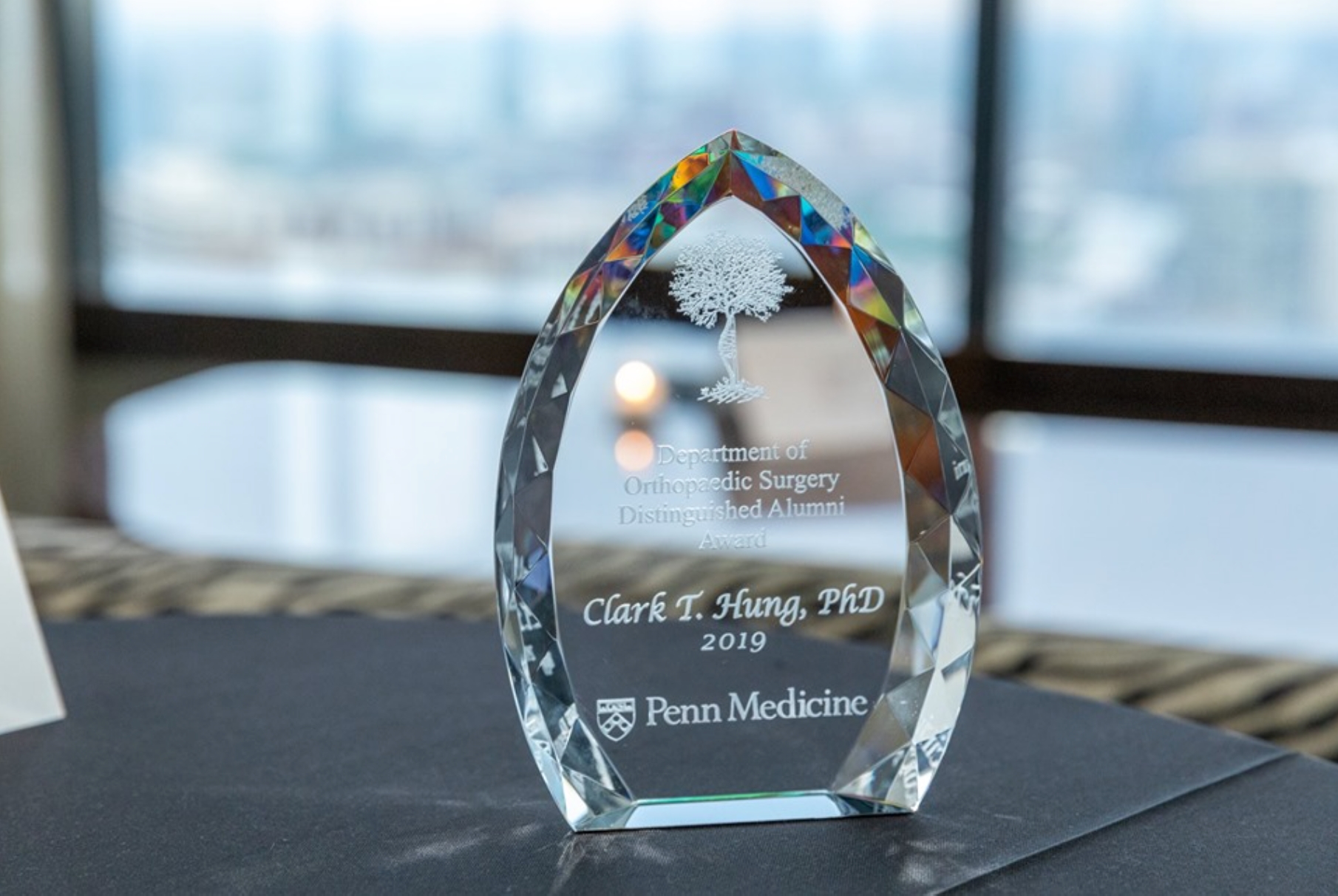Cartilage Wear Particles Induce an Inflammatory Response Similar to Cytokines in Human Fibroblast-like Synoviocytes
Authors: Estell EG, Silverstein AM, Stefani RM, Lee AJ, Murphy LA, Shah RP, Ateshian GA, Hung CT.
Abstract: The synovium plays a key role in the development of osteoarthritis, as evidenced by pathological changes to the tissue observed in both early and late stages of the disease. One such change is the attachment of cartilage wear particles to the synovial intima. While this phenomenon has been well observed clinically, little is known of the biological effects that such particles have on resident cells in the synovium. The present work investigates the hypothesis that cartilage wear particles elicit a pro-inflammatory response in diseased and healthy humanfibroblast-like synoviocytes, like that induced by key cytokines in osteoarthritis. Fibroblast-like synoviocytes from 15 osteoarthritic humandonors and a subset of 3 non-osteoarthritic donors were exposed to cartilage wear particles, interleukin-1α or tumor necrosis factor-α for 6 days and analyzed for proliferation, matrix production, and release of pro-inflammatory mediators and degradative enzymes. Wear particlessignificantly increased proliferation and release of nitric oxide, interleukin-6 and -8, and matrix metalloproteinase-9, -10, and -13 in osteoarthritic synoviocytes, mirroring the effects of both cytokines, with similar trends in non-osteoarthritic cells. These results suggest that cartilage wear particles are a relevant physical factor in the osteoarthritic environment, perpetuating the pro-inflammatory and pro-degradative cascade by modulating synoviocyte behavior at early and late stages of the disease. Future work points to therapeutic strategies for slowing disease progression that target cell-particle interactions.
